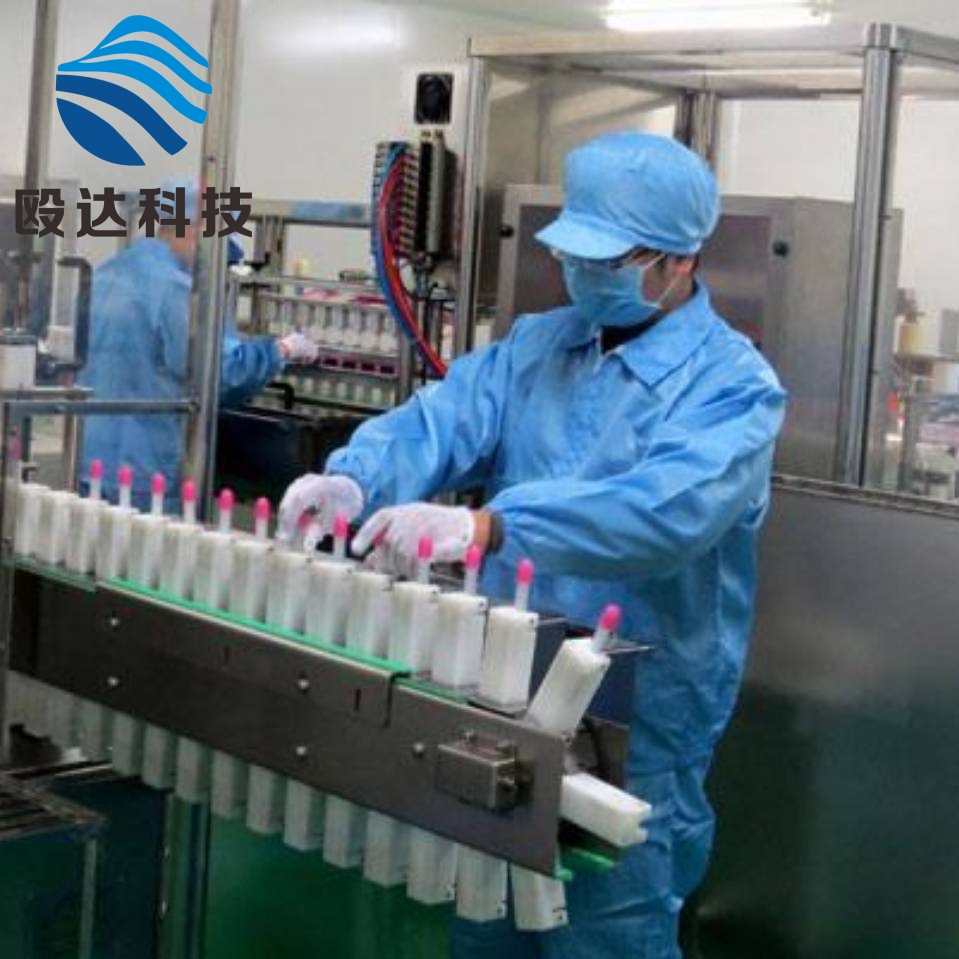-
Categories
-
Pharmaceutical Intermediates
-
Active Pharmaceutical Ingredients
-
Food Additives
- Industrial Coatings
- Agrochemicals
- Dyes and Pigments
- Surfactant
- Flavors and Fragrances
- Chemical Reagents
- Catalyst and Auxiliary
- Natural Products
- Inorganic Chemistry
-
Organic Chemistry
-
Biochemical Engineering
- Analytical Chemistry
- Cosmetic Ingredient
-
Pharmaceutical Intermediates
Promotion
ECHEMI Mall
Wholesale
Weekly Price
Exhibition
News
-
Trade Service
Vaccine is one of the main preventive measures for new coronavirus infection, but oral drugs are equally important, and even become one of the decisive treatments in the future!
At present, oral drugs (mostly small molecule therapeutic drugs) for the new coronavirus have made good progress
.
At least five therapeutic drugs are currently in the late stage of research and development, and it is expected that molnupiravir is expected to be launched in the United States this year:
(1) molnupiravir, developed by Merck;
(2) PF-07321332, Pfizer's oral 3CL protease inhibitor, this molecule is now officially in phase III clinical trials;
(3) s217622, Japan Shionogi's oral 3CL protease inhibitor , Is currently undergoing Phase III clinical trials, and the official news is coming to an end
(4) Prokruline, developed by Pioneer Pharmaceuticals, is an androgen receptor antagonist;
(5) AT-527, Roche’s, and Remdesivir and Molnupiravir belongs to both RdRp inhibitors, and its current progress is also in phase III
.
1.
Molnupiravir, Morapivir1.
Molnupiravir, Morapivir
Recently, the first to disclose Phase III clinical data was Molnupiravir developed by Merck and Ridgeback.
The Phase III clinical trial ended early because of its excellent efficacy
New Coronary Pneumonia Diabetes
Phase III clinical interim data of Molnupiravir treatment of patients with mild to moderate new coronary pneumonia, the hospitalization or mortality rate of the Molnupiravir treatment group was 7.
3% (28/385), and the hospitalization or mortality rate of the control group was 14.
1% (53/377).
Molnupiravir reduced hospitalization or mortality by 50%, p=0.
0012
2.
Proxalutamide (GT0918)-pioneering the pharmaceutical industry
Proxalutamide (GT0918)-pioneering the pharmaceutical industry
Prokrulide is an AR (androgen receptor androgen receptor) antagonist developed by Pioneer Pharmaceutical
.
According to related research in the pioneering pharmaceutical industry, procrulamide inhibits the function of androgen receptor, down-regulates the expression of ACE2 and TMPRSS2 from the transcription level, thereby blocking the entry of SARS-CoV-2 into host cells
ACE2 on the cell membrane is the receptor of the new coronavirus Covid-19, which allows the virus to enter the host cell by binding to the S1 domain of the new coronavirus spike protein (S protein)
.
The transmembrane serine protease (TMPRSS2) has a cleavage effect on the viral S protein and ACE2, making the two easier to combine, thereby promoting the virus to enter the host cell
Prokalamide was originally a drug for the treatment of prostate cancer.
It is said that due to accidental observations that prostate cancer patients seem to be worse than ordinary people in terms of new crown deterioration, pioneering pharmaceuticals found through experiments in February 2020 that prokalamide can Degrade ACE2 and TMPRSS2 proteins
.
At the same time, compared with other AR drugs, procrulamide can further reduce AR gene expression, so it is more likely to treat the new crown
A breakthrough in the treatment of COVID-19 with Prokalamide: Significantly reduce the rate of hospitalization and severe illness
And the anti-viral effect is also very satisfactory, which is even more unbelievable
.
For severely ill patients with new coronary disease, procrulamide may have another pathway that can suppress immune storm and inflammatory storm, but it has not yet been confirmed
.
In addition, the drug may have some undiscovered curative effects on the new coronavirus
Prokramide may have another pathway that can suppress immune storms and inflammatory storms, but it has not yet been confirmed that the drug may also have some undiscovered curative effects on the new coronavirus.
However, the results have also been widely questioned
The most fierce fired is Dr.
Eric Topol, a member of the National Academy of Medicine.
He has been following the new crown and has written many new crown research articles.
He said that these results are too good to believe.
Not to say that there is almost no other in the entire medical history in terms of new crowns.
Medical intervention has had such amazing effects.
Dr.
Topol believes that the case fatality rate in the experimental control group is very high, almost 50%.
This comparison will make the P drug in the experimental group look particularly amazing.
In addition, there is a Brazilian Critical Care Department doctor Pecanha said this The trial started in early February, but the interim results were reported in March.
In less than 30 days, 600 patients had to be enrolled and then the patients had to be monitored.
The speed was suspiciously fast, but the author replied that the mortality rate in the control group was so high.
not surprising because it was popular in Brazil gamma variant up to 43% mortality in a test of the state as for experiments done so quickly , he said a few days in patients with clinical trials can be recovered and were discharged other patients are scrambling to participate in the experiment and then this pre The printed copy was once submitted to the New England Journal of Medicine, but was rejected.
The author asked why the editor said in the email response that your results were unexpectedly good .
Experts who reviewed the article thought it was not enough to look at the analysis data.
You must see the original data.
But the magazine was unable to spend so much time reviewing all the original materials.
Later, the British Lancet also took this article
.
The final phase 2 clinical trial was published in the unknown journal Front Med (Lausanne)
.
This is the result is too good, unbelievable, and rejected by the journal
.
.
This is the result is too good, unbelievable, and rejected by the journal
.
After the company published this conclusion, it attracted the attention of a Brazilian scholar and initiated a clinical trial initiated by the investigator (that is, a trial performed by a tripartite investigator rather than a drug developer) and reported significant results
.
The company will then use this data to roll out applications in many places around the world to conduct large-scale phase 3 clinical trials
.
At present, Paraguay has obtained emergency use authorization, and many mainstream countries are under review
.
For severely ill patients with new coronary disease, procrulamide may have another pathway that can suppress immune storm and inflammatory storm, but it has not yet been confirmed
.
In addition, the drug may have some undiscovered curative effects on the new coronavirus
.
Major clinical trial progress:
①A trial initiated by a Brazilian researcher for severely ill patients with new coronary disease (completed)
①A trial initiated by a Brazilian researcher for severely ill patients with new coronary disease (completed)Previously, the Brazilian researchers initiated a clinical trial on placebo severely ill patients with new coronary disease.
590 patients, 1:1 assigned the treatment group and the placebo group, were administered for 14 days, all results p <0.
0001
.
Registered in the United States, Phase 3 clinical trial for outpatients with mild and moderate new coronary disease (ongoing)
Registered in the United States, Phase 3 clinical trial for outpatients with mild and moderate new coronary disease (ongoing)Research method: Compare GT0918 plus standard of care (SOC) with placebo plus SOC
.
Approximately 668 subjects will be randomly assigned to the GT0918 plus SOC or placebo plus SOC group
.
Inclusion criteria: One or more mild or moderate symptoms related to COVID-19 within 5 days after the onset of symptoms
.
Primary endpoint: hospitalization rate within 28 days
.
Estimated main completion time: August 24, 2021
3.
AT-527-Roche/Atea
AT-527-Roche/Atea
AT-527 (RO7496998) is also an RNA polymerase inhibitor.
After AT-527 enters the human body, it can be converted into free base AT-511 (anti-coronavirus EC90 reaches 0.
47μM), which can subsequently generate triphosphate metabolism with higher anti-coronavirus activity The product AT-9010 has an in vitro anti-coronavirus activity that is 5-8 times higher than that of Molnupiravir
.
Because AT-527 can target two polymerases that are essential for viral RNA replication and transcription, including RNA-dependent RNA polymerase (RdRP), it has a unique dual inhibitory mechanism for the new coronavirus
.
The drug was developed by Atea, and Roche acquired AT-527 rights to treat COVID-19 outside the United States with an upfront payment of US$350 million and subsequent milestone payments
.
The company believes that the paragraph drugs not only as an oral therapy for the treatment of patients hospitalized COVID-19, and may be the first oral treatment option for non-hospitalized patients, but also has a post-exposure prophylaxis potential of the treatment
.
On June 30, 2021, Atea Company released preliminary data on AT-527 clinical phase II double-blind treatment of hospitalized patients: 62 patients, 550 mg BID, administered for 5 days, on the second day of treatment, compared with placebo , The viral load of the AT-527 group decreased by 0.
7 log (80%); on day 14, 47% of the patients in the AT-527 group became negative, and 22% of the patients in the comfort crew became negative
.
The Phase 2 data of AT-527 currently seems inferior to Molnupiravir, but the company said it has the potential to be used as a preventive treatment after exposure in the future as a focus
.
At the same time, the company and Merck have also adopted a different plan in clinical design, with the time of symptom relief as the main goal.
It is expected that there will be three phases of data release within the year
.
In addition, studies have also shown that AT-527 cannot inhibit the replication of the new coronavirus
.
Major clinical trial progress:
① Registered in the United States, Phase 3 clinical trial for outpatients with mild and moderate new coronary disease (ongoing)
① Registered in the United States, Phase 3 clinical trial for outpatients with mild and moderate new coronary disease (ongoing)Research method: This study is a multi-center trial that compares the efficacy of AT-527 and placebo for light-to-medium-sized adult and adolescent patients with new coronary disease
.
Approximately 1386 subjects will be randomly assigned to the experimental group and the placebo group
.
Inclusion criteria: One or more mild or moderate symptoms related to COVID-19 within 5 days after the onset of symptoms
.
Primary and secondary endpoints: Oral 550 mg AT-527 twice a day (BID) for 5 days
.
Primary endpoint: Time to relieve or improve symptoms of COVID-19 (21.
5 hours) [Time frame: up to 29 days] Remission of new symptoms is defined as the length of time from randomization until the score remains 0 or 1 for at least 21.
5 hours; secondary Endpoint: Time to relieve or improve COVID-19 symptoms (43 hours) [Time frame: up to 29 days] Remission of new symptoms is defined as the length of time from randomization to keeping the score at 0 or 1 for at least 43 hours
.
Estimated main completion time: August 3, 2021
4.
PF-07321332-Pfizer
PF-07321332-Pfizer
PF-07321332 is a 3CL protease inhibitor, which plays an important role in the life cycle of a variety of coronaviruses.
Its potential advantage is that it can have an effect on all current new coronavirus variants
.
The IC50 of PF-07321332 single-drug inhibitory activity against the new coronavirus at the molecular level is 19nM, and the EC50 of PF-07321332 single-drug inhibitory activity against the virus in human airway epithelial cells, HeLa and A549 cells that can express the ACE2 protein are 62, 99 and respectively.
56nM, showing good antiviral activity
.
Pfizer's PF-07321332 has a broad-spectrum anti-coronavirus ability, which means that its potential is great.
Although in theory the virus may still mutate and escape its mechanism of action, the actual chance of occurrence is very small
.
Pfizer also believes that the drug is expected to obtain EUA in the fourth quarter of this year during the performance call.
Pfizer currently uses the combination therapy of PF-07321332+ritonavir in clinical trials
.
Major clinical trial progress:
Registered in the United States, Phase 3 clinical trial for outpatients with mild and moderate new coronary disease (ongoing)
On September 1, Pfizer announced that it has completed the first patient in the phase 2/3 clinical trial of the new crown drug PF-07321332
.
Research method: This study is a multi-center trial comparing the efficacy of PF-07321332/ritonavir with placebo for mild and medium-sized patients with new coronary disease
.
Approximately 3000 subjects will be randomly assigned to the experimental group and the placebo group
.
Inclusion criteria: One or more mild or moderate symptoms related to COVID-19 within 5 days after the onset of symptoms
.
The total study time is up to 24 weeks
.
Primary and secondary endpoints: Primary endpoint: The proportion of participants who were hospitalized or died related to COVID-19 for any reason [time range: day 1 to day 28]
.
Secondary endpoints: incidence of adverse events (AE) and serious adverse events (SAE) of PF-07321332/ritonavir relative to placebo [time range: day 1 to day 34]; persistence of new coronary symptoms/ Severe time [time range: day 1 to day 28]
Estimated main completion time: October 5, 2021
5.
s217622 Oral 3CL protease inhibitor by Shionoyoshi Company, Japan
s217622 Oral 3CL protease inhibitor by Shionoyoshi Company, Japan
Shionoyoshi is a global leader in the development of antiviral drugs such as influenza.
The well-known oseltamivir and baloxavir used to treat influenza were developed by it, and Roche was finally authorized to sell
.
The new type of coronavirus (SARS-CoV-2) has an enzyme called 3CL protease, which is essential for the proliferation of the virus, and S-217622 inhibits the growth of SARS-CoV-2 by inhibiting the 3CL protease
.
In non-clinical studies using SARS-CoV-2 to infect animals, it has been confirmed that the viral load is rapidly and significantly reduced
.
Phase 1 clinical trials started in Japan in July 2021, and phase 2/3 clinical trials for patients with mild COVID-19 or asymptomatic SARS-CoV-2 infection are currently underway
.
In the phase 1 trial that started in July 2021, S-217622 did not show serious safety issues, and the pharmacokinetics exceeded the target blood concentration
.
In animal models, the viral load drops rapidly after treatment
.
Shionogi also announced plans to produce 1 million doses of COVID-19 therapeutics for domestic use by March 2022
.
.
In animal models, the viral load drops rapidly after treatment
.
Shionogi also announced plans to produce 1 million doses of COVID-19 therapeutics for domestic use by March 2022
.
In the phase 1 trial that started in July 2021, S-217622 did not show serious safety issues, and the pharmacokinetics exceeded the target blood concentration
.
In animal models, the viral load drops rapidly after treatment
.
Shionogi also announced plans to produce 1 million doses of COVID-19 therapeutics for domestic use by March 2022
.
In the phase 1 trial that started in July 2021, S-217622 did not show serious safety issues, and the pharmacokinetics exceeded the target blood concentration
.
In animal models, the viral load drops rapidly after treatment
.
Shionogi also announced plans to produce 1 million doses of COVID-19 therapeutics for domestic use by March 2022
.
Related literature:
Related literature: Related literature: Related literature:McCoy J, Goren A, Cadegiani FA, Vaño-Galván S, Kovacevic M, Situm M, Shapiro J, Sinclair R, Tosti A, Stanimirovic A, Fonseca D, Dorner E, Onety DC, Zimerman RA, Wambier CG.
Proxalutamide Reduces the Rate of Hospitalization for COVID-19 Male Outpatients: A Randomized Double-Blinded Placebo-Controlled Trial.
Front Med (Lausanne).
2021 Jul 19;8:668698
Proxalutamide Reduces the Rate of Hospitalization for COVID-19 Male Outpatients: A Randomized Double-Blinded Placebo-Controlled Trial.
Proxalutamide Reduces the Rate of Hospitalization for COVID-19 Male Outpatients: A Randomized Double-Blinded Placebo-Controlled Trial.
Cadegiani FA, McCoy J, Gustavo Wambier C, Vaño-Galván S, Shapiro J, Tosti A, Zimerman RA, Goren A.
Proxalutamide Significantly Accelerates Viral Clearance and Reduces Time to Clinical Remission in Patients with Mild to Moderate COVID-19: Results from a Randomized, Double-Blinded, Placebo-Controlled Trial.
Cureus.
2021 Feb 22;13(2):e13492
Khoo SH, Fitzgerald R, Fletcher T, Ewings S, Jaki T, Lyon R, Downs N, Walker L, Tansley-Hancock O, Greenhalf W, Woods C, Reynolds H, Marwood E, Mozgunov P, Adams E, Bullock K, Holman W, Bula MD, Gibney JL, Saunders G, Corkhill A, Hale C, Thorne K, Chiong J, Condie S, Pertinez H, Painter W, Wrixon E, Johnson L, Yeats S, Mallard K, Radford M, Fines K , Shaw V, Owen A, Lalloo DG, Jacobs M, Griffiths G.
Optimal dose and safety of molnupiravir in patients with early SARS-CoV-2: a Phase I, open-label, dose-escalating, randomized controlled study.
J Antimicrob Chemother.
2021 Aug 27:dkab318
Optimal dose and safety of molnupiravir in patients with early SARS-CoV-2: a Phase I, open-label, dose-escalating, randomized controlled study.
molnupiravir J Antimicrob Chemother.
2021 Aug 27:dkab318
Do TND, Donckers K, Vangeel L, Chatterjee AK, Gallay PA, Bobardt MD, Bilello JP, Cihlar T, De Jonghe S, Neyts J, Jochmans D.
A robust SARS-CoV-2 replication model in primary human epithelial cells at the air liquid interface to assess antiviral agents.
Antiviral Res.
2021 Aug;192:105122
Leave a message here







